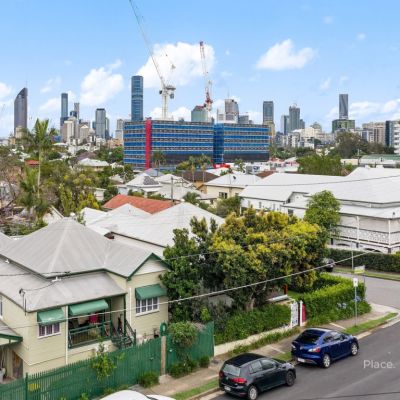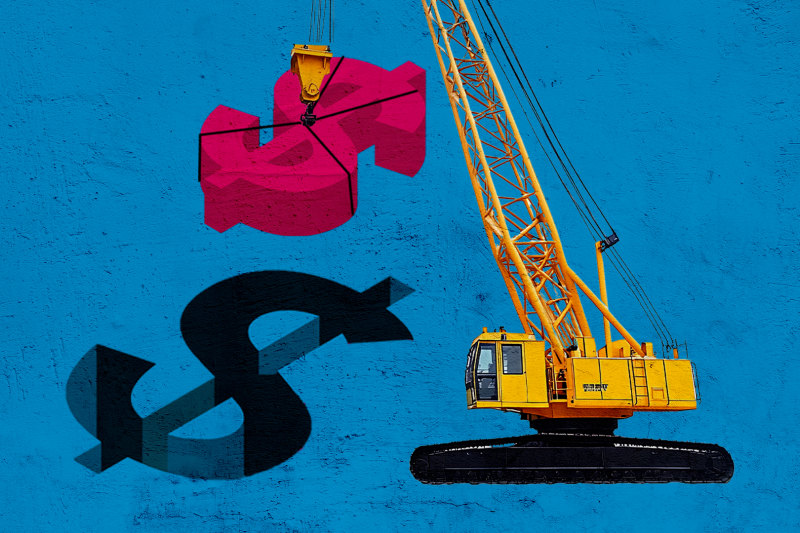The cash rate has reached a ‘tipping point’ for the property market. Now what?
Australia’s property price rebound could be cut short by rapid interest rate rises which have breached a “tipping point” that experts warn could push the market into a double-dip downturn.
A rise in forced sales is looking increasingly likely after the cash rate was lifted to 4.1 per cent on Tuesday, well above the rate many recent homebuyers were stress tested at. However, experts say other economic factors would put a floor under prices.

SQM Research founder Louis Christopher expects an uptick in distressed sales in the months to come, having previously forecast that a cash rate of 4 per cent or more would constitute a turning point for Australia’s housing market.
That is because buyers who borrowed in recent years were stress-tested on their ability to repay their loans if rates rose by 2.5 or 3 percentage points. The cash rate has already climbed 4 percentage points, and further hikes could lay ahead.
Christopher said the probability of further price falls had climbed above 60 per cent, and expected a rise in forced sales activity towards the end of the year.
“We’ll see a fall in clearance rates soon, prices will peak again soon and towards the end of the year we’ll see a new round of prices falls, most likely going into 2024 [as forced sales rise],” he said.
“This of course increases the probabilities of a hard landing in the wider economy as well. The narrow path is now a tightrope.”
Distressed listings in May were already up 29 per cent in NSW year-on-year, and 25.7 per cent in Victoria, SQM Research shows. However, deceased estates and divorce sales are also counted as distressed listings.
 Property prices are rising again. Are we at the bottom of the market or the beginning of another boom?
Property prices are rising again. Are we at the bottom of the market or the beginning of another boom? Homes under $750k within walking distance of the city: The cheapest suburbs within 2km of the CBD
Homes under $750k within walking distance of the city: The cheapest suburbs within 2km of the CBD The top three capital cities where property prices are already recovering – and where to buy before prices rise again
The top three capital cities where property prices are already recovering – and where to buy before prices rise again
Westpac senior economist Matthew Hassan said more stress would potentially emerge across the housing sector in the months to come. Forced sales could also increase, but it would depend on how high the RBA took the cash rate and what effect, if any, it had on the employment market.

“They’re making it pretty clear they’re prepared to go further if things don’t come to heel pretty quick,” Hassan said. “That all sort of spells a bit of a check on the strength of the housing market that we’ve seen in the last few months.
“I think the key to that will be what happens in the employment sector. Most lenders can deal with stress if the borrower is still employed.”
While prices have been on the rise, Hassan expects them to end the year flat.
“Some of the gains … would have been based on [the expectation of] interest rates going down by the end of the year, and that’s obviously not the case.”
PEXA chief economist Julie Toth said prices and settlement volumes fell sharply off the back of initial rate hikes, but had proved resilient so far this year, even recording a recent uptick.
“It’s unusual for those two things to happen when we’re yet to see the rates cycle peak.”
The uptick was being supported by strong employment, Toth said, and a rise in the unemployment rate could have the reverse effect.
“One of the things that triggers house price declines is sharp rises in unemployment.
“Many households have responded [to rate hikes] by increasing their work hours or moving to a better paying job.”
However, she was sceptical that distressed mortgage sales would be a big factor in the property market this year, and said they could be hard to identify.
“People don’t wait until the bank is repossessing their home, so those distressed sales come onto the market [like normal and] short of interviewing them for the reason why, it can be hard to identify those distressed sales.”
St George Bank chief economist Besa Deda said an increase distressed sales was possible, but did not expect it have a significant impact on the market.
“If you’re an owner-occupier you do tend to pull back your spending on everything you can in order to make your mortgage repayment, but the investors may be more likely to sell the property,” she said.
Deda had expected property prices “to bump around the bottom for some time”, but said how long that was for would depend on how high the cash rate climbed, and how long it remained elevated.
However, she said strong demand from population growth and low listing levels and new house supply would provide a floor for prices.
We recommend
States
Capital Cities
Capital Cities - Rentals
Popular Areas
Allhomes
More






